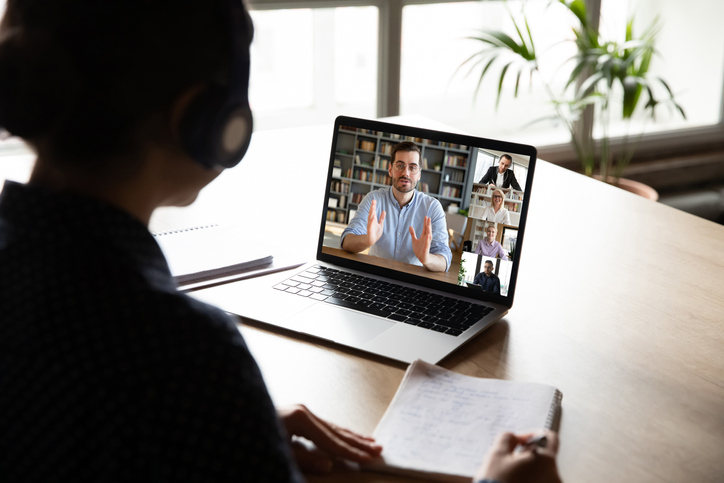Overcome Nervousness in Your Video-Conference Meetings
If you were called to stand up and give an impromptu speech, would you flourish or would you flee?
One of the world’s richest men said he used to be so scared of public speaking that he was “terrified of getting up and saying [his] name.” Warren Buffett spent most of his college years avoiding courses with group speaking elements, and even signed up for a public speaking course but dropped out at the last minute.
Beating Back the Butterflies
Glossophobia, or fear of public speaking, is believed to affect at least 75 percent of the population.
From small butterflies to full-on panic, public speaking causes many to tremble. Comedian Jerry Seinfeld once joked that some people report that they fear public speaking more than death, so “if you go to a funeral, you’re better off in the casket than doing the eulogy!”
With the 2020 pandemic thrusting us into a new world of virtual meetings, this discomfort can be amplified. Professors and teachers around the world report teaching to dark blank squares, as students turn off cameras and “hide” from their cohorts.
In real-life groups, we don’t feel the same pressure to perform socially as we might through online platforms. Experts say that 15 percent of our communication is done verbally, and 85 percent is sent through body language, so the extra effort it takes to engage through socially distant meetups can be especially stressful.
How can you overcome this discomfort? Here are recommendations from the pros:
Adjust Your Camera at Eye Level
Don’t have the webcam pointed up at you, or you’ll offer teammates a revealing glance at your nose hairs or double chin.
Eye to eye is the best, so even if it feels weird, try to look directly at the camera (straight ahead) as you speak. If necessary, stack books under your device until your webcam is eye level.
Look at Others While You Listen
Perhaps you’re distracted by seeing yourself onscreen and feel more self-conscious as a result.
Adjust your lighting and image touch-ups at the start of a meeting, then do your best to look at others, not yourself.
Treat the Meeting Like an Ordinary Group Discussion
Forget the idea that a video meeting can make or break you.
Treat these like ordinary conversations or casual brainstorming sessions. Speak in a relaxed tone, act like yourself, and show engagement by nodding, leaning forward to listen, or tilting your head to “give them your ear.”
Practice an “Others First” Mindset
During public speaking, you feel “all eyes” watching you.
This can be painfully vulnerable, like a caveman exposed in daylight. While you may want to shrink back, calm your anxiety by focusing on your desire to encourage others. Sarah Gershman, President of Green Room Speakers, says this:
“The key to disarming our organic panic button is to turn the focus away from ourselves — away from whether we will mess up or whether the audience will like us — and toward helping the audience.
“Studies have shown that . . . showing kindness and generosity to others has been shown to activate the vagus nerve, which has the power to calm the fight-or-flight response. When we are kind to others, we feel calmer and less stressed. The same principle applies in public speaking. When we approach speaking with a spirit of generosity, we counteract the sensation of being under attack and start to feel less nervous.”
Before you chime in to share, make small bullet points of what you want to contribute, so you are focused on connection and less critical of your own, awkward voice.
Finally, building confidence takes time. Each time you participate, push yourself to do a bit more. Unlearning self-conscious thoughts and fears won’t kill you. But it will take practice! So what better time to try?
- Tags: brand


